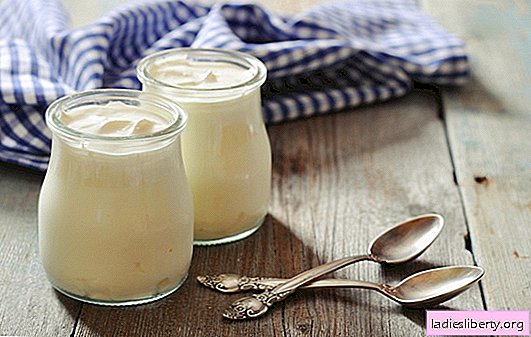
Vitamin D is a group of vitamins that are a necessary part of a healthy person’s diet. The daily need for this vitamin from the age of 1 year to 80 years varies from 400 to 800 IU (international units). Also, it is the most necessary in the treatment and prevention of rickets and many other diseases.
What foods contain vitamin D
As mentioned above, vitamin D is a group of vitamins. There are six of them:
• Vitamin D1 - ergocalciferol and lumisterol, in a ratio of 1: 1;
• Vitamin D2 - ergocalciferol;
• Vitamin D3 - cholecalciferol;
• Vitamin D4 - 2,2-dihydroergocalciferol;
• Vitamin D5 - sitocalciferol;
• Vitamin D6 - Sigma Calciferol.
When talking about vitamin D, doctors and pharmacists mean two - D2 and D3. These vitamins are formed when the skin is exposed to ultraviolet (sunlight) rays. The more sun in this region, the lower the risk of a lack of this vitamin in the body.
This vitamin is found in such foods:
• Eggs, or rather, egg yolk - about 27 IU / 100 g;
• Butter - not more than 35 IU / 100 g;
• Cheese - less than 0.5 IU / 100 g;
• Milk - from 0.5 to 3 IU / 100 g, depending on fat content;
• Corn oil - approximately 10 IU / 100 g;
• Meat - 15 IU / 100 g;
• Animal liver - less than 50 IU / 100 g;
• Fish oil - approximately 160 IU / 100 g;
• Fatty fish species - from 45 to 280 IU / 100 g, depending on the species;
• Caviar - from 100 to 200 IU / 100 g.
• Some types of mushrooms grown under natural conditions (for example, chanterelles) - from about 80 to 1600 IU / 100 g.
Vitamin D is also found in some plants:
• Alfalfa (shoots) - approximately 192 IU / 100 g;
• Nettle - 180 IU / 100 g;
• Parsley, dill - approximately 27 IU / 100 g.
Vitamin D is also found in other herbs, but in much smaller quantities. And since a person is not able to digest a large amount of grass, they are not particularly interesting as a source of "solar" vitamin.
How to consume Vitamin D-containing foods
Vitamin D is fat soluble. Therefore, it is necessary to use it with fat-containing additives. Therefore, dishes need to be seasoned with various oils, as well as sour cream or fat yogurt. They will contribute to the absorption of vitamin D in the blood and its proper distribution.
Fish and its derivatives (caviar, liver) can be used just like that, without additives.
Milk products, although they contain vitamin D, they do not always contribute to its replenishment. Milk contains a lot of phosphorus, which prevents the absorption of this vitamin.
Even if you follow a proper diet that contains the daily required amount of vitamin D, while not having the necessary time in the sun, this vitamin will not be properly absorbed. Therefore, you need to be in the sun every day during its activity, that is, from about 9.00 to 13.00 hours of the day. The lighter the skin, the less sun exposure is required. But even in the sunniest countries, vitamin D deficiency may occur. This deficiency occurs in dark-skinned people, overweight people, the elderly, and also in those who cover their limbs.
How to store foods containing vitamin D
Like most foods, you need to keep them in the refrigerator. Of course, fresh food is best. But not always and not everyone has the opportunity to acquire just such.
Since this vitamin is fat-soluble, it is practically indestructible. But when defrosting food, you need to give them time to thaw naturally, rather than doing it with a microwave, hot water, etc.
But when storing food in the light and when oxygen is available, vitamin D may be destroyed.
How to cook foods containing vitamin D
For proper nutrition, it is better to steam or stew. Although high temperatures do not affect the amount of vitamin remaining in the finished product.
In winter breakfast, fried eggs are best. If possible, a raw egg will fill up the daily required amount of vitamin D. In addition, a bun with butter can be added to your favorite most coffee a couple of times a week. Oatmeal also contains vitamin, but you need to boil it in water, adding a piece of oil or seasoning with corn oil (with a diet).
For lunch or dinner, you can eat a meal of fatty fish. And if you flavor it with cheese - there will be a storehouse of vitamin D.
But all these delicious dishes need to be alternated, since not only a deficiency is dangerous, but also an excess of vitamin D.
Signs of Vitamin D Deficiency
The main signs of vitamin D deficiency are:
• Excitation of the nervous system;
• impaired appetite;
• Constant feeling of thirst;
• Frequent urination;
• impaired vision.
In addition, there may be a deterioration in well-being, a decrease in pressure, and a rapid heartbeat.
Vitamin D deficiency diseases
The most important disease accompanying vitamin D deficiency is rickets. It can occur both in early infancy and in more adult, especially the elderly, age. In addition, due to its lack, absorption of calcium is impaired, which increases the likelihood of fractures and impairs bone splicing.
In children with rickets, the following symptoms are observed:
1. Later than most peers erupt, the fontanel closes;
2. Legs are bent, pelvic deformation is possible;
3. Deformation of the bones of the facial skull;
4. Deformation of the skull as a whole (the so-called "square head");
5. Change of the chest ("chicken breast");
6. Sweating, nervousness, tearfulness, sleep disturbance.
For treatment, you must take at least 1500 IU of vitamin D. For this, 2 tablespoons of fish oil per day is enough.
Hypervitaminosis: Excess Vitamin D
Vitamin deficiency is very dangerous. But excess is no less harmful. The main symptoms in this case are:
• Weakness, loss of appetite;
• Vomiting / nausea;
• Diarrhea / constipation;
• Muscular, headache, joint pain;
• Increased pressure, fever, cramps.
Hypervitaminosis can also occur when a large amount of not only vitamin D, but also calcium is ingested. In this case, ossification occurs, deposition of calcium salts in the kidneys, liver, cardiovascular system and other organs. In this case, the functions of these organs are violated.
Drug Interactions
When using vitamin D with various drugs at the same time, its digestibility may be worsened. Do not take it simultaneously with laxatives and diuretics. The former do not allow calcium and vitamin D to be absorbed normally, while the latter wash out these vitamins.
Also, various hormone-containing preparations contribute to the leaching of vitamin D from the body. Cholesterol-releasing drugs also interfere with the normal absorption of the vitamin. This is due to the fact that vitamin D is fat-soluble, and these drugs remove excess fat.
But vitamin D itself can interfere with the treatment of something else. For example, it interferes with the absorption of iron, since it promotes the absorption of calcium in the intestine, and, as you know, calcium and iron are rivals. Therefore, in the treatment of anemia, it is better to limit its intake. In addition, it reduces the effectiveness of cardiac glycolysides, which is no less dangerous.
Therefore, the intake of vitamin D should be carried out only as prescribed by the doctor, even with all its necessity.











